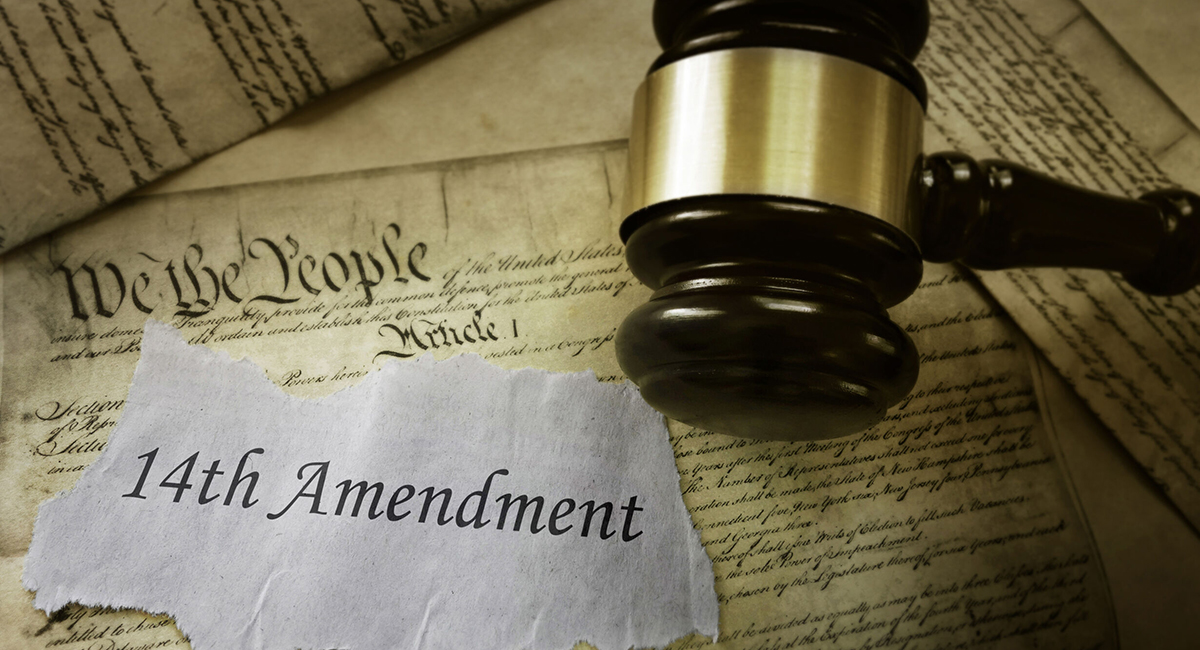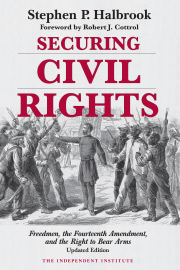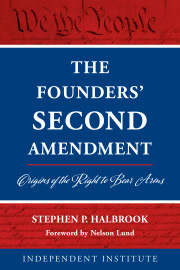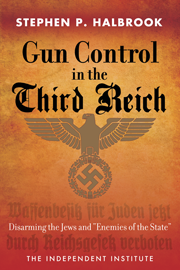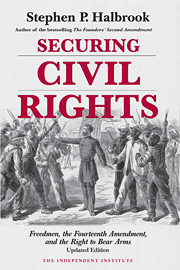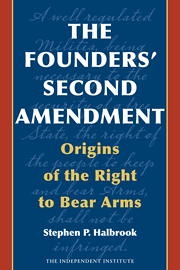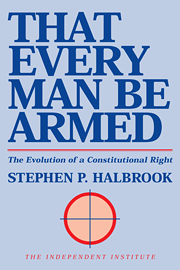When proposing the Fourteenth Amendment to Congress in 1866, Senator Jacob Howard referred to “the personal rights guaranteed and secured by the first eight amendments of the Constitution; such as freedom of speech and of the press; ... the right to keep and bear arms....” He averred that “the great object” of the amendment was “to restrain the power of the States and compel them at all times to respect these great fundamental guarantees.” The design was not to change the nature of the rights, but to prevent the states from violating them.
The Second Amendment was ratified in 1791, and the Fourteenth Amendment was ratified in 1868. The Supreme Court stated in D.C. v. Heller (2008) and repeated this year in N.Y. York State Rifle & Pistol Ass’n v. Bruen: “Constitutional rights are enshrined with the scope they were understood to have when the people adopted them.” So do we look for that understanding in 1791 or in 1868?
The simple answer would be that the substantive nature of the right is defined by reference to its origins in 1791, while the understanding that it’s a fundamental right intended to be applied to the states would be found in 1868. But litigation-driven, preconceived outcomes are at work, few firearm restrictions existed at the Founding but more were adopted in the decades after the Fourteenth Amendment, and the incentive thus exists for opponents of the right to keep and bear arms to root for 1868 as the crucial date in order to find historical analogues to current restrictive laws.
Bruen held that “when the Second Amendment’s plain text covers an individual’s conduct, the Constitution presumptively protects that conduct.” To justify a regulation, the government “must demonstrate that the regulation is consistent with this Nation’s historical tradition of firearm regulation.”
“In the aftermath of the Civil War, there was an outpouring of discussion of the Second Amendment in Congress and in public discourse, as people debated whether and how to secure constitutional rights for newly free slaves,” stated Heller, citing this author’s Freedmen, the Fourteenth Amendment, and the Right to Bear Arms. However, the Court continued, “those discussions took place 75 years after the ratification of the Second Amendment,” and thus “they do not provide as much insight into its original meaning as earlier sources.”
In deciding that the Second Amendment applies to the states through the Fourteenth Amendment, the Court in McDonald v. Chicago (2010) focused not on the meaning of the right, but on its fundamental character, both at the Founding and during Reconstruction. The Court found particularly instructive the Freedmen’s Bureau Act of 1866, which secured to all citizens without regard to race “the right ... to have full and equal benefit of all laws and proceedings” concerning “personal liberty” and “personal security,” “including the constitutional right to bear arms....” One can hear echoes of Blackstone in those concepts, handed down by the Founders.
The object was thus to extend the right to all citizens, not to change the nature of the right. As McDonald explained, Bill of Rights guarantees incorporated under the Fourteenth Amendment are enforced against the states “according to the same standards that protect those personal rights against federal encroachment.” Just as the meaning of the rights to free speech and against unreasonable search and seizure are found in the understanding of 1791, so is the meaning of the right to keep and bear arms. The Supreme Court has never found that the primary meaning of any provision of the Bill of Rights is to be determined by how it was understood in 1868.
As Bruen remarked, “when it comes to interpreting the Constitution, not all history is created equal,” and further, “to the extent later history contradicts what the text says, the text controls.” The Court acknowledged “an ongoing scholarly debate on whether courts should primarily rely on the prevailing understanding of an individual right when the Fourteenth Amendment was ratified in 1868 when defining its scope,” but saw no need to address the issue because “the public understanding of the right to keep and bear arms in both 1791 and 1868 was, for all relevant purposes, the same with respect to public carry.”
The sources cited for that putative debate—a pre-Heller book by Prof. Akhil Amar and a pre-Bruen essay by Prof. Kurt Lash—fail to make a convincing case that the meaning of the Bill of Rights changed in 1868. First, its guarantees against federal violation have always been applicable since its ratification in 1791, and it would be incongruous to have a different Bill of Rights applicable to the states. Second, Supreme Court precedent has always looked to the 1791 understanding as the crucial period for the meaning of the guarantees, and a contrary rule invented for the Second Amendment has no basis in those precedents. Third, advocates of the 1868 theory rely on the privileges-or-immunities clause of the Fourteenth Amendment, but the Court has never relied on that clause for incorporation. And fourth, there is no indication that anyone at the time thought that this is what the Fourteenth Amendment would accomplish, and there is nothing in the text of the Amendment to support it, either.
For a detailed analysis of the above controversy, see Mark W. Smith, “Attention Originalists: The Second Amendment was adopted in 1791, not 1868,” just published in Harv. J.L. & Pub. Pol’y Per Curiam, and the longer version in SSRN. It argues that only historical analogues from the Founding may be used to determine the meaning and scope of the Second Amendment, and that post-Civil War historical analogues may not undercut or contradict 1791 protections, but may only confirm them.
As to “the slight uptick in gun regulation during the late-19th century,” mostly in the Western Territories, the Bruen Court found that such evidence “cannot provide much insight into the meaning of the Second Amendment when it contradicts earlier evidence.” Moreover, Bruen continued, such localized restrictions could not overcome the broad evidence elsewhere of public carry, they were rarely subjected to judicial scrutiny, and they were short-lived.
Desperate to uphold bans, government defendants are appealing to all kinds of non-analogous outliers in their briefs. One is the short-lived bans on sale of Bowie knives in a tiny handful of states, and that’s supposed to be analogous to today’s bans on possession of semiauto rifles and standard magazines. Such bans are in no way analogous to today’s prohibitions on commonly-possessed firearms. Regarding the citation to post-Fourteenth Amendment outliers by D.C. to justify its rifle ban, then Judge Kavanaugh referred in his dissent in Heller II (D.C. Cir. 2011) to “the paucity of precedent sustaining bans comparable to those at issue here and in Heller.”
In short, there is only one Second Amendment. It means what it meant in 1791. Although analysis of attitudes in 1868 is relevant to determining whether the Second Amendment is incorporated, that does not change the fact that what was incorporated was the pre-existing right to keep and bear arms. Post-1868 evidence cannot be used to contradict that original understanding.

